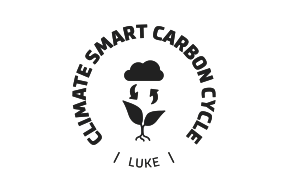How may global changes affect the future of Finland's agricultural and food economy?
The future development of Finland's agricultural and food economy depends significantly on changes happening in other countries and how Finland reacts to those changes. In the next few decades, societies will change in a way that is difficult to predict. Researchers at the Natural Resources Institute Finland (Luke) and the Finnish Environment Institute SYKE have constructed four alternative scenarios of how the Finnish agri-food sector could change in different global circumstances. The results of the study were recently published in the journal Regional Environmental Change.
The Natural Resources Institute Finland (Luke) and the Finnish Environment Institute SYKEOver the past two decades, changes in the world economy, policies and trade have been large and unpredictable. Climate change is already affecting the agricultural sector in Finland, and temperatures are predicted to rise faster than the global average. In order to illustrate the kinds of changes in operational circumstances that Finnish agriculture may have to face in the future, four different national scenarios have been developed that are consistent with a set of existing global pathways.

Development paths illustrate possible futures
Specifying the wide-ranging pathways of change required close co-operation with key actors and stakeholders in the agri-food sector. The stakeholders were invited to a workshop to discuss how the sector might meet the challenges posed by different global Shared Socioeconomic Pathways (SSPs). Four development paths, each one depicting a variety of conditions for the agriculture and food industry in Finland up to 2050 and beyond, were constructed from the results of the stakeholder discussions.
The paths describing alternative developments of Finnish agriculture in different global change scenarios are as follows:
- Sustainability — Taking the Green Road
- Regional Rivalry – Rocky Road
- Inequality — A Road Divided
- Development with fossil energy — Taking the Highway
The paths are based on global SSPs, which are used worldwide in climate change research and assessments, including by the Intergovernmental Panel on Climate Change (IPCC). The pathways created in this exercise are potentially valuable for natural resource research in Finland as well.
Finnish pathways are consistent with changes in Europe
The following examples illustrate the types of issues specific to Finland that emerged from the stakeholder discussions:
- The state of the environment, although deteriorating under some pathways, would remain more valued in Finland than in most other parts of the world.
- Agricultural subsidies will continue to be necessary in Finland under all pathways, but their volume is likely to decrease.
- Pathways that anticipate restrictions on world trade provide an opportunity to diversify domestic production
- Pathways assuming reduced livestock production and increased plant-based diets would lead to a significant reduction of cultivated land in Finland
“These future scenarios offer opportunities to study climate change and various future developments in Finnish agriculture", says research professor Heikki Lehtonen from Luke, who was first author of the article. Lehtonen also finds it promising that the development narratives developed for Finland are consistent with the corresponding ones built for the entire European agricultural sector, published in a recent article in Global Environmental Change, where Lehtonen was a co-author.
The Finnish narratives were built as part of a broader national scenario development study, PLUMES, coordinated by research professor Timothy Carter from SYKE, a co-author of the article. Carter also contributed to a recent review of the global SSP narratives used in this study that was published in Nature Climate Change . The PLUMES project was funded by the Academy of Finland.



